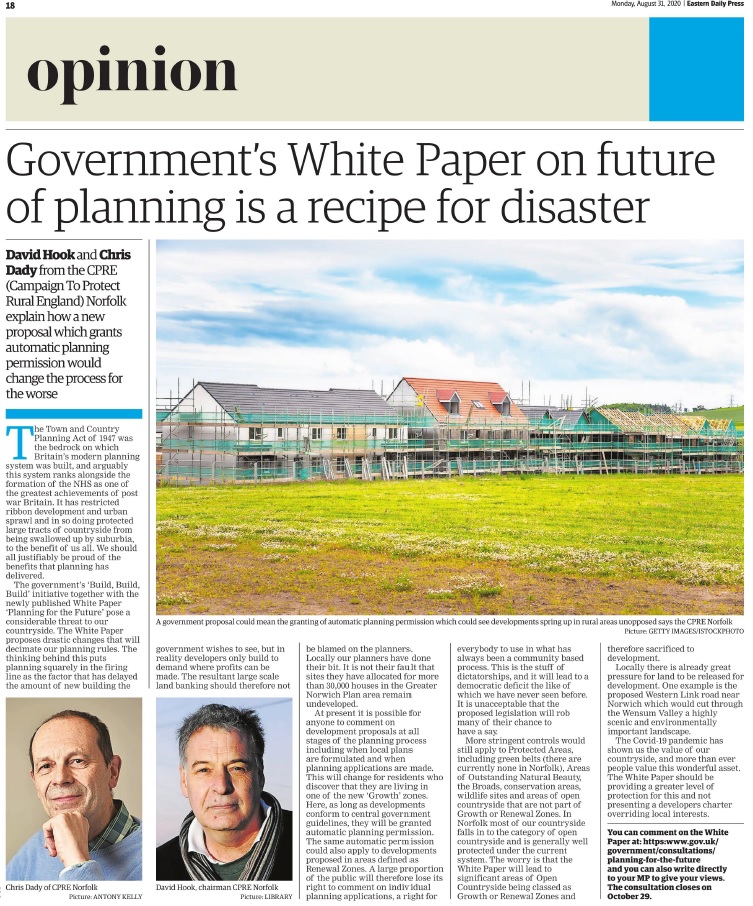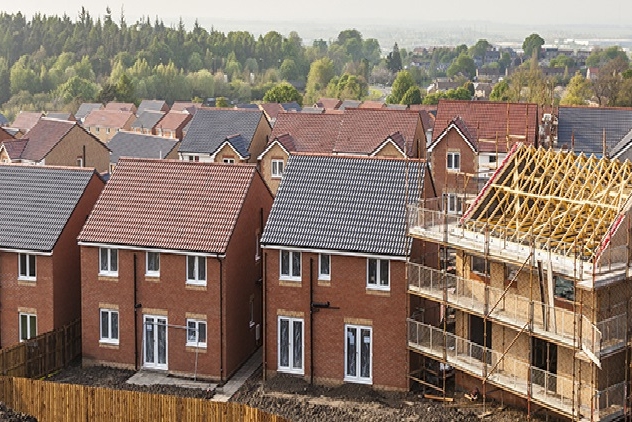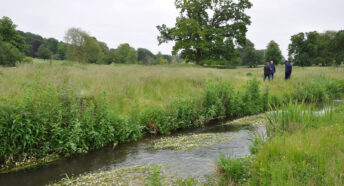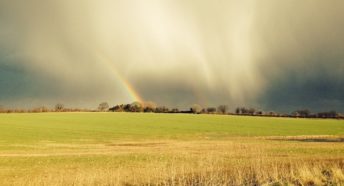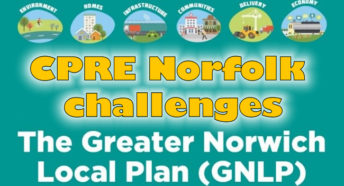EDP Article – Planning White Paper is a recipe for disaster
Printed in the EDP on Monday 31 August 2020, David Hook and Chris Dady from CPRE Norfolk explain how a new proposal which grants automatic planning permission would change the process for the worse.
The Town and Country Planning Act of 1947 was the bedrock on which Britain’s modern planning system was built and arguably this system ranks alongside the formation of the NHS as one of the greatest achievements of post war Britain. It has restricted ribbon development and urban sprawl and in so doing protected large tracts of countryside from being swallowed up by suburbia. We should all justifiably be proud of the benefits that planning has delivered.
The government’s ‘Build, Build, Build’ initiative together with the newly published White Paper ‘Planning for the Future’ pose a real threat to our countryside. The White Paper proposes drastic changes that will decimate our planning rules. The thinking behind this puts ‘planning’ squarely in the firing line as the factor that has delayed the amount of new building the government wishes to see, but in reality developers only build to demand where profits can be made. The resultant large-scale land banking should therefore not be blamed on the planners. Locally, our planners have done their bit. It is not their fault that sites they have allocated for more than 30,000 houses in the Greater Norwich Plan area remain undeveloped.
At present it is possible for anyone to comment on development proposals at all stages of the planning process, including when local plans are formulated and when planning applications are made. This will change for residents who discover they are living in one of the new ‘Growth’ Zones. Here, as long as development conforms to central government guidelines, they will be granted automatic planning permission. The same automatic permission could also apply to developments proposed in areas defined as Renewal Zones. A large proportion of the public will therefore lose its right to comment on individual applications, a right for everybody to use in what has always been a community-based process. This is the stuff of dictatorships, and it will lead to a democratic deficit the like of which we have never seen before. It is unacceptable that the proposed legislation will rob many of a chance to have their say.
More stringent controls would still apply to Protected Areas, including green belts (there are currently none in Norfolk), Areas of Outstanding Natural Beauty, the Broads, conservation areas, wildlife sites and areas of open countryside that are not part of the Growth or Renewal Zones. In Norfolk, most of our countryside falls into the category of open countryside and is generally well protected under the current system. The worry is that the White Paper will lead to significant areas of open countryside being classified as Growth or Renewal Zones and therefore sacrificed to development.
Locally, there is already great pressure for land to be released for development. One example is the proposed Western Link road near Norwich which would cut through the Wensum Valley, a highly scenic and environmentally important landscape.
The Covid-19 pandemic has shown us the value of our countryside, and more than ever people value this wonderful asset. The White Paper should be providing a greater level of protection for Norfolk and not presenting a developers’ charter overriding local interests.
You can comment on the White Paper at: www.gov.uk/government/consultations/planning-for-the-future.
The consultation closes on 29 October, but you can also write to your MP giving your views.
This article appeared in the Eastern Daily Press on 31 August 2020.
